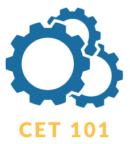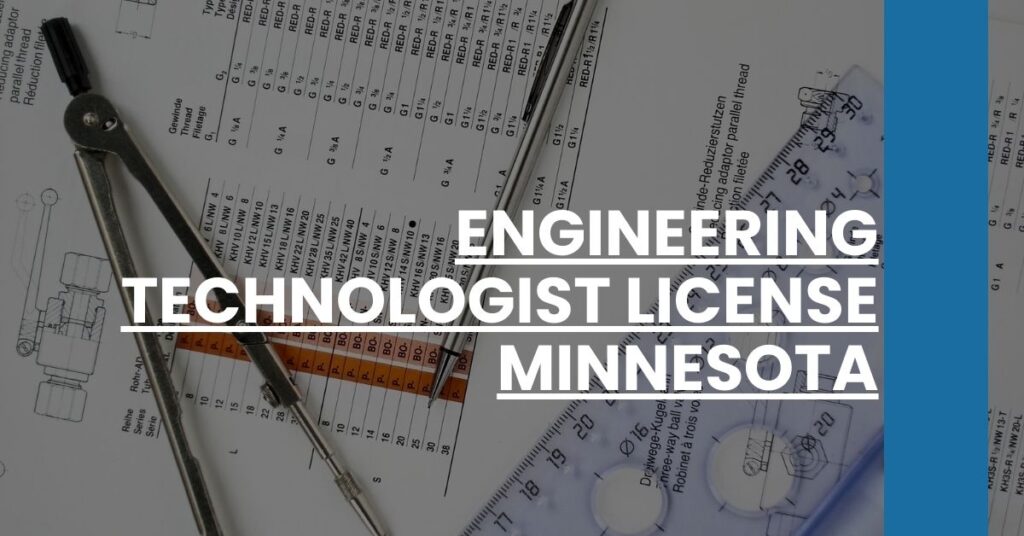Looking for schools in a specific city? Check out our lists of Engineering Technology Schools in Minneapolis, St. Paul, and Rochester.
Navigating the path to obtaining an Engineering Technologist License in Minnesota can feel like a daunting task. With so many steps, requirements, and details to track, it’s easy to feel overwhelmed. You’re not alone in this journey; many aspiring engineering technologists face the same challenges.
To help you streamline this process, I’ve put together a comprehensive guide. Inside, you’ll find:
- A clear breakdown of the steps to get your Engineering Technologist License in Minnesota.
- Detailed information on the education and experience prerequisites.
- Insights on the application and examination requirements.
With this guide, you’ll be equipped with all the essential knowledge to take confident steps towards your licensure.
- What Is an Engineering Technologist?
- Why Obtain an Engineering Technologist License in Minnesota?
- Education Requirements for Engineering Technologists in Minnesota
- Experience Requirements for Licensing
- Steps to Apply for an Engineering Technologist License
- Examination Requirements
- Maintaining and Renewing Your License
- Frequently Asked Questions (FAQs)
- Resources for Aspiring Engineering Technologists
- More Information on Becoming an Engineering Technologist
- Online Degree Programs for Engineering Technologists
- Best Engineering Technology Schools
- Looking for Engineering Technologist Information On States Bordering Minnesota?
- Conclusion
What Is an Engineering Technologist?
An Engineering Technologist specializes in the practical application of engineering principles and technological advancements. Unlike traditional engineers who may focus on theoretical designs, engineering technologists are hands-on problem solvers. They implement and manage engineering technologies, ensuring that practical applications align seamlessly with industry standards.
Roles and Responsibilities
Engineering technologists typically handle the operational aspects of engineering projects. Their responsibilities may include:
- Design Implementation: Turning conceptual designs into functional prototypes.
- Testing and Evaluation: Conducting tests to ensure products meet performance standards.
- Maintenance and Troubleshooting: Offering solutions and fixes for technical issues.
- Project Management: Overseeing projects from conception through completion.
Differences from Other Engineering Roles
While closely related to engineers, technologists differ in several key areas:
- Focus on Application: Whereas engineers often engage in design and theoretical work, technologists focus more on applying these designs in real-world settings.
- Education: Engineering technologists usually obtain a Bachelor’s degree in Engineering Technology rather than a traditional engineering degree.
- Licensing and Certification: The requirements for certification and licensure can differ. In many cases, technologists face distinct exams and experience requirements.
Why Obtain an Engineering Technologist License in Minnesota?
Acquiring an Engineering Technologist License in Minnesota carries numerous benefits. Not only does it affirm your expertise and professionalism, but it also enhances your career opportunities and legal standing.
Career Advantages
Holding a license can significantly boost your career:
- Professional Recognition: Licensed technologists are viewed as credible and reliable professionals.
- Job Security: Many employers prefer or require licensed technologists for advanced roles.
- Higher Earning Potential: Licensing can lead to higher salaries and better job positions.
Legal and Ethical Responsibility
A license signifies that you adhere to industry standards and ethical practices. It also means:
- Compliance: You meet state-specific regulations, ensuring legal ability to work on certain projects. Learn more by checking the Minnesota Requirements.
- Accountability: You’re responsible for the integrity and safety of your engineering solutions.
Education Requirements for Engineering Technologists in Minnesota
To obtain your Engineering Technologist License in Minnesota, specific educational criteria must be met.
Accepted Degrees
You generally need a Bachelor’s degree in Engineering Technology from an ABET-accredited program. ABET accreditation ensures that your educational background meets industry benchmarks, preparing you for licensure.
Accredited Programs
Here are some educational pathways:
- ABET-Accredited Programs: Various institutions offer ABET-accredited Engineering Technology degrees. For more details, visit ABET-Accredited Programs.
- University of Minnesota Engineering Technology Programs: A local option providing relevant and accredited degree courses.
Key Tip: Choose accredited programs to ensure your education qualifies you for licensure.
Experience Requirements for Licensing
In addition to education, you need relevant work experience to qualify for the Engineering Technologist License in Minnesota.
Types of Acceptable Experience
Your experience should be in the engineering field, involving:
- Practical Implementation: Hands-on work in applying engineering principles.
- Project Management: Supervising and managing technical projects.
- Design and Testing: Involvement in design, testing, and troubleshooting.
Documenting Experience
Proper documentation is crucial. Track your projects and roles meticulously, and ensure your supervisors can verify your experience. Use the guidelines provided by the Minnesota Board of Architecture, Engineering, Land Surveying, Landscape Architecture, Geoscience, and Interior Design (AELSLAGID).
Resource: Experience Requirements
Steps to Apply for an Engineering Technologist License
Following a systematic approach will simplify the application process for your Engineering Technologist License in Minnesota.
Application Process
- Obtain the Application: Download the application form from the AELSLAGID website.
- Fill in Your Details: Provide personal, educational, and professional information accurately.
- Submit Supporting Documents: Include transcripts, proof of experience, and any other required documentation.
- Pay the Fees: Be aware of application fees and ensure timely payment.
- Submit Your Application: Send in your completed application and wait for confirmation.
Essential Tip: Double-check your application to avoid delays.
Examination Requirements
Passing the necessary exams is a critical step in achieving your Engineering Technologist License in Minnesota.
The FE Exam
The Fundamentals of Engineering (FE) exam is typically required for licensure. This exam tests your knowledge in various engineering principles and practices.
Preparation Resources
To succeed, utilize the following resources:
- Official Review Course: Consider enrolling in a structured review course.
- Practice Tests: Access practice materials to familiarize yourself with exam questions. Visit Practice Tests for resources.
- Study Guides: Use comprehensive study guides designed for the FE exam.
Pro Tip: Consistent, focused study will enhance your performance.
By comprehending and following these guidelines, you’re already well on your way to securing your Engineering Technologist License in Minnesota.
Maintaining and Renewing Your License
Once you’ve achieved your Engineering Technologist License in Minnesota, maintaining it is equally crucial to ensure your professional status remains active and recognized by the state.
Renewal Process
You must renew your license periodically to maintain your eligibility to practice. Here’s what you need to know:
- Renewal Frequency: The typical renewal period for an engineering technologist license is every two years.
- Renewal Application: Submit a renewal application form along with any required documentation well before the expiration date.
- Fees: Be prepared to pay a renewal fee. This fee is usually consistent with the initial licensure fee but verify the current rate on the AELSLAGID website.
Continuing Education Requirements
To renew your license, you must meet the continuing education requirements:
- Credit Hours: Most licenses require a specific number of Continuing Education Units (CEUs) or Professional Development Hours (PDHs), often around 30-40 hours per renewal cycle.
- Approved Courses: Participate in approved courses, workshops, and conferences. These should be relevant to your field and enhance your skills.
- Documentation: Maintain records of your completed continuing education activities. Ensure these documents are ready if you’re subject to an audit by the licensing board.
Advancing Your Knowledge: It’s important to continually update your knowledge base. Continuing education ensures that you stay current with the latest developments in your industry.
Frequently Asked Questions (FAQs)
Aspiring engineering technologists often have several questions about the licensure process in Minnesota. Here are some of the most common queries:
What If My License Expires?
If your license expires, you cannot legally practice as an engineering technologist in Minnesota. To reactivate an expired license, you typically need to:
- Reapply: Submit a late renewal application.
- Pay Late Fees: Be prepared to cover any additional late fees.
- Fulfill CE Requirements: Ensure any continuing education requirements are up-to-date.
Can I Transfer My License from Another State?
Yes, Minnesota allows for licensure reciprocity with certain conditions:
- State Reciprocity Agreements: Check if Minnesota has a reciprocity agreement with the state where you’re currently licensed.
- Application Process: Submit an application for licensure by comity, along with supporting documents that verify your current licensure status.
- Verification: The AELSLAGID will verify your credentials and work experience before granting a Minnesota license.
Are There Alternative Paths to Licensure?
In some cases, alternative paths may exist:
- Experience Waivers: If you have extensive professional experience, certain educational requirements may be waived.
- Special Exams: Some candidates may qualify to take a special exam in lieu of traditional exams, based on their unique qualifications and experience.
Resources for Aspiring Engineering Technologists
Several resources can help you on your journey to becoming a licensed engineering technologist in Minnesota.
Study Materials
Access high-quality study materials to prepare for your exams:
- Official Guides: Utilize study guides specifically designed for the FE and PE exams.
- Practice Tests: Regularly take practice tests to assess your preparation level. Visit Practice Tests for valuable resources.
Professional Organizations
Join professional organizations to benefit from networking, mentoring, and continuing education opportunities:
- National Society of Professional Engineers (NSPE): Engaging with NSPE can provide valuable insights and resources for professional growth. Discover more about their contributions in this article.
- Minnesota Society of Professional Engineers (MnSPE): Get involved in your local professional community for events and networking opportunities.
Pro Tip: These organizations often offer discounts on study materials and educational courses to their members.
More Information on Becoming an Engineering Technologist
For those considering a career as an engineering technologist, comprehensive resources are available to guide you:
- In-Depth Guides: Explore detailed guides that outline everything from education to licensure. For more information, visit Becoming an Engineering Technologist.
Online Degree Programs for Engineering Technologists
Pursuing an engineering technology degree online is a flexible and increasingly popular option. Here’s why it might be right for you:
Accredited Programs
Reputable institutions offer online engineering technology degrees:
- Flexible Scheduling: Balance your studies with work or other commitments.
- Accredited Curricula: Ensure that your online degree program is ABET-accredited. See the options available at the University of Minnesota.
Advantages of Online Learning
- Cost-Effective: Often more affordable than traditional on-campus programs.
- Convenience: Study from anywhere, removing the need for commuting.
For more options, explore Online Programs.
Best Engineering Technology Schools
Choosing the right school is critical in your journey to becoming an engineering technologist.
Top-Ranked Institutions
Some of the best engineering technology schools include:
- Purdue University: Known for its robust engineering technology program.
- Rochester Institute of Technology: Offers a wide range of engineering technology specializations.
- California State Polytechnic University: Features hands-on learning and industry connections.
Making an Informed Decision
When selecting a school, consider:
- Accreditation: Verify ABET accreditation.
- Specializations: Choose programs that offer the specializations you’re interested in.
- Placement Rates: Research schools with high employment rates for graduates.
Explore more at Best Schools.
Looking for Engineering Technologist Information On States Bordering Minnesota?
In addition to Minnesota, we suggest looking for schools in nearby states.
- Engineering Technologist License Wisconsin
- Engineering Technologist License Iowa
- Engineering Technologist License North Dakota
- Engineering Technologist License South Dakota
- Engineering Technologist License Michigan
Conclusion
The journey to obtaining and maintaining an Engineering Technologist License in Minnesota is both rewarding and achievable with the right resources and dedication. By understanding the requirements and embracing continuing education, you’ll remain a valuable and legally practicing professional in the engineering technology field.
For more information and resources to guide you, visit How to Become an Engineering Technologist in Minnesota.

